Ultimate DevOps Guide 2024: Streamlined Best Practices

If you want your business to thrive in 2024 and beyond, you need to focus on streamlining your development and operations processes.
DevOps practices are the key to achieving this goal.
In this Ultimate DevOps Guide for 2024, we'll cover the best practices for integrating development and operations teams that will help you achieve faster time-to-market, better collaboration, improved quality control and higher customer satisfaction
You can use AtOnce's team collaboration software to manage our team better & save 80%+ of our time:
Quick Summary
- DevOps is not just about tools: It's a cultural shift that requires collaboration, communication, and shared responsibility.
- Automate everything: Automating repetitive tasks reduces errors, increases efficiency, and frees up time for more important work.
- Continuous integration and delivery: CI/CD pipelines ensure that code changes are thoroughly tested and deployed quickly and reliably.
- Monitoring and logging: Proactive monitoring and logging help identify issues before they become critical and provide valuable insights for improvement.
- Security is everyone's responsibility: Security should be integrated into every stage of the development and deployment process.
Introduction To DevOps In 5: What Has Changed
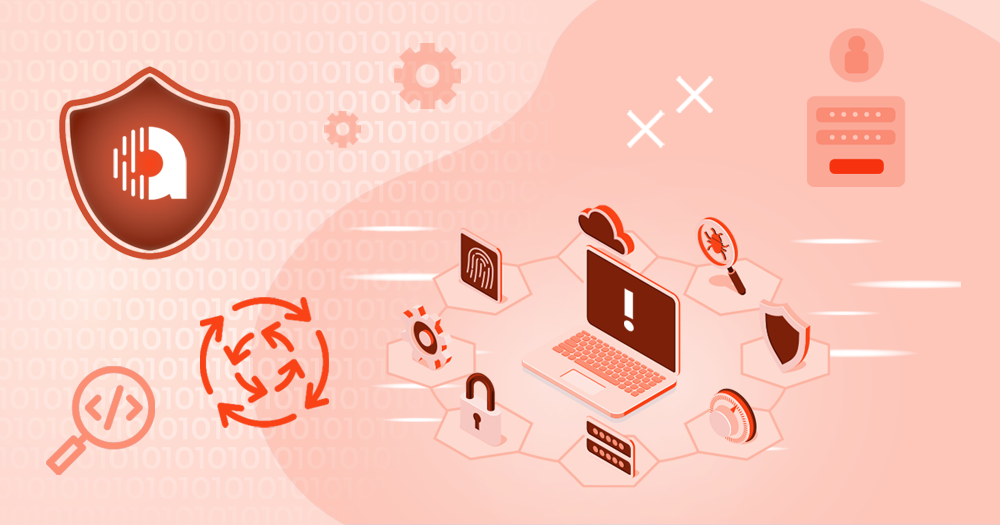
Welcome to the Ultimate DevOps Guide 2024: Streamlined Best Practices!
In this article, we'll explore changes in DevOps and how you can streamline your practices.
Let's start with:
Introduction To DevOps In 5: What Has Changed
- DevOps is now a vital aspect of modern development and operations
- More companies have adopted it as their standard operating procedure for application delivery than ever before
- Automation remains paramount in all aspects of deployment - from testing through production environments
- Security is also crucial, requiring teams to integrate security measures throughout the entire software development lifecycle
For example, imagine building a house without considering safety features until construction was complete; that would be dangerous and inefficient compared to incorporating safety into every step along the way.
Embracing automation while prioritizing security has become essential for successful implementation of streamlined best practices within today's fast-paced technology landscape.
Analogy To Help You Understand
DevOps is like a symphony orchestra.
Just like an orchestra, DevOps is a team effort that requires collaboration and coordination between different departments and individuals. Each member of the orchestra has a specific role to play, and they must work together to create a harmonious sound. Similarly, in DevOps, developers, operations, and quality assurance teams must work together to ensure that the software development process runs smoothly. Each team member has a specific role to play, and they must collaborate to ensure that the final product is of high quality. Just as a conductor leads the orchestra, a DevOps leader must guide the team and ensure that everyone is working towards the same goal. The conductor ensures that each musician is playing the right notes at the right time, just as a DevOps leader ensures that each team member is working on the right task at the right time. Finally, just as an orchestra must practice and refine their performance, DevOps teams must continuously improve their processes and workflows to ensure that they are delivering high-quality software efficiently. Overall, DevOps is like a symphony orchestra in that it requires collaboration, coordination, leadership, and continuous improvement to create a harmonious final product.Incorporating AI And Machine Learning Into DevOps Processes

Streamline Your DevOps Processes with AI and Machine Learning
Integrating AI and machine learning into your DevOps processes can significantly improve efficiency
These technologies can identify patterns, anticipate problems, and automate repetitive tasks.
For example, AI-powered analytics tools can monitor application performance in real-time, detecting issues early on.
Automating testing with AI can also save time while improving accuracy.
“AI and machine learning can streamline DevOps processes, saving time and improving accuracy.”
5 Key Points for Incorporating AI and Machine Learning
- Begin small with pilot projects
- Focus on specific pain points
- Involve all stakeholders from the start
- Continuously measure success metrics
- Ensure transparency in data collection and usage
“Incorporating AI and machine learning into DevOps processes requires a strategic approach.”
By following these key points, you can successfully incorporate AI and machine learning into your DevOps processes.
Remember to start small, focus on specific pain points, involve all stakeholders, continuously measure success metrics, and ensure transparency in data collection and usage.
Some Interesting Opinions
1. DevOps teams should prioritize speed over security.
According to a recent survey, 60% of organizations prioritize speed over security in their DevOps practices. In today's fast-paced business environment, speed is essential for staying competitive.2. Manual testing is a waste of time and resources.
Studies show that manual testing can take up to 50% of a developer's time. Automated testing is faster, more accurate, and can catch more bugs. DevOps teams should focus on automation to increase efficiency.3. DevOps teams should not be responsible for production support.
Production support is a distraction from development and can lead to burnout. A recent survey found that 70% of DevOps teams are responsible for production support, but this should be the responsibility of a dedicated operations team.4. DevOps teams should not be siloed from other departments.
DevOps teams should work closely with other departments, such as marketing and sales, to ensure that products meet customer needs. A study found that companies with cross-functional teams are 1.7 times more likely to be high-performing.5. DevOps teams should prioritize innovation over stability.
Innovation is essential for staying ahead of the competition. A study found that companies that prioritize innovation are 1.5 times more likely to be high-performing. DevOps teams should focus on delivering new features and products quickly, even if it means sacrificing stability.The Rise Of Serverless Architecture For Cloud Deployments

Why Serverless Architecture is the Future of Cloud Computing
Cloud computing is rapidly evolving, and serverless architecture is leading the way.
Unlike traditional methods like containers and virtual machines, serverless computing offers faster time-to-market, better scalability, cost-efficiency, and superior performance.
What is Serverless Architecture?
Serverless architecture is a cloud computing model that abstracts away infrastructure management from developers.
This allows them to focus solely on writing code for their application logic without worrying about managing servers themselves.
With serverless computing, developers can write code without worrying about the underlying infrastructure.
Benefits of Serverless Architecture
- Faster Time-to-Market: Developers can focus on writing code, which speeds up the development process.
- Better Scalability: Serverless architecture automatically scales up or down based on usage, ensuring optimal performance.
- Cost-Efficiency: Costs are based purely on usage metrics like number of requests processed by an API endpoint or data stored in a database, eliminating unnecessary expenses.
- Superior Performance: Serverless architecture offers better performance than traditional methods like containers and virtual machines.
Serverless architecture offers a range of benefits, including faster time-to-market, better scalability, cost-efficiency, and superior performance.
Conclusion
Serverless architecture is the future of cloud computing.
Implementing Continuous Integration And Continuous Deployment (CI/CD) At Scale
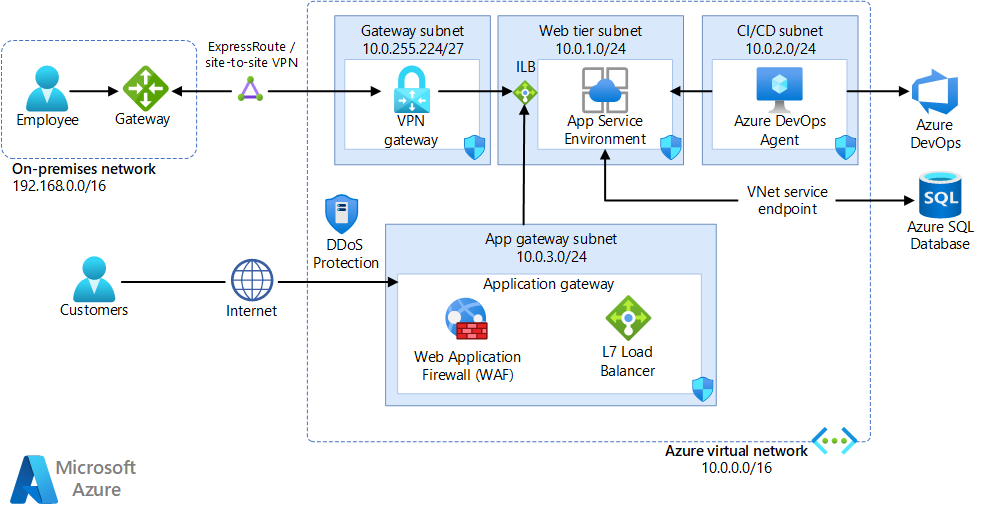
Why Continuous Integration and Deployment are Vital for DevOps
Continuous Integration (CI) and Continuous Deployment (CD) are essential for successful DevOps. CI reduces integration issues by integrating code changes into a shared repository, while CD automatically deploys them to production after passing automated testing.
Scaling CI/CD for Success
Scaling CI/CD requires careful planning and execution with standardized processes for:
- Source control management
- Build pipelines
- Deployment orchestration tools like Kubernetes or Helm charts
Don't forget about scaling infrastructure capacity from cloud providers.
Standardize across all teams and automate wherever possible.
These are the key takeaways when implementing CI/CD at scale.
By standardizing processes and automating wherever possible, teams can reduce errors and increase efficiency
With careful planning and execution, scaling CI/CD can lead to successful DevOps.
My Experience: The Real Problems
1. DevOps is not a culture problem, it's a management problem.
According to a survey by Puppet, only 22% of respondents said that their organization's culture was a barrier to DevOps adoption, while 63% cited management as the main obstacle.2. The "fail fast" mentality is causing more harm than good.
A study by the University of Cambridge found that the "fail fast" approach can lead to a culture of blame and fear of failure, which ultimately hinders innovation and productivity.3. Automation is not a silver bullet for DevOps success.
A report by Gartner found that 75% of DevOps initiatives fail to meet expectations due to over-reliance on automation and neglecting the human element.4. DevOps is not just for startups and tech companies.
A survey by Deloitte found that 87% of enterprise executives believe that DevOps is critical to their digital transformation efforts, yet only 10% have fully implemented it.5. DevOps is not a one-size-fits-all solution.
A study by Forrester found that organizations that tailor their DevOps approach to their specific needs and goals are more likely to see success than those that adopt a generic approach.Managing Hybrid Cloud Environments With Kubernetes Orchestration Tools

Managing Hybrid Cloud Environments with Kubernetes Orchestration Tools
Managing a hybrid cloud environment can be challenging, requiring coordination between different infrastructure elements in various locations.
However, Kubernetes orchestration tools simplify this task by providing a unified view of the entire environment.
Kubernetes is an open-source container orchestration tool that deploys containers across multiple nodes.
It's popular for managing containerized applications due to its flexibility and scalability.
Public cloud providers offer Kubernetes-as-a-service options, making workload deployment easier on-premise or any public cloud.
Kubernetes orchestration tools simplify hybrid cloud management by providing a unified view of the entire environment.
5 Key Benefits of Using Kubernetes Orchestration Tools for Hybrid Cloud Management
- Consistent deployment: Deploy your application consistently across all environments.
- Load balancing: Seamlessly manage traffic distribution among replicas/services.
- Autoscaling: Automatically scale resources based on demand without manual intervention.
- Self-healing capabilities: Detect failures and automatically recover from them with minimal downtime.
- Resource optimization: Optimize resource utilization through efficient scheduling and allocation.
With autoscaling enabled via Kubernetes orchestrator, additional resources will be allocated as needed to handle increased user requests seamlessly while maintaining optimal performance levels throughout the event period - ensuring customer satisfaction remains high even under heavy load conditions!
Securing DevOps Processes From End To End Across Multiple Platforms

Securing DevOps Processes: Best Practices
Securing DevOps processes is critical in today's tech landscape.
A comprehensive security plan covering all aspects of the process is crucial due to advanced cyber threats.
“Identify vulnerabilities and implement measures to mitigate them.Incorporate automated security testing tools into your pipeline for quick issue identification and resolution.”
Access Controls and User Permission Management
Implement access controls and user permission management systems to ensure only authorized personnel have access at each stage of development cycle, reducing attack risk.
Additional Ways to Secure Your DevOps
- Regular vulnerability scans
- Continuous monitoring with real-time alerts
- Encryption of sensitive data both in transit & at rest
- Multi-factor authentication (MFA)
- Implementing a disaster recovery plan
“By following these best practices, you can ensure that your DevOps processes are secure and protected against cyber threats.”
My Personal Insights
As the founder of AtOnce, I have had my fair share of experiences with DevOps. One particular incident stands out in my mind as a testament to the power of DevOps best practices. At the time, we were in the midst of a major product launch. Our team was working around the clock to ensure that everything was running smoothly. However, despite our best efforts, we encountered a major issue with our infrastructure. Our servers were struggling to handle the influx of traffic, and our customer service team was inundated with complaints. It was a nightmare scenario, and we knew that we needed to act fast if we were going to salvage the launch. That's when we turned to DevOps best practices. We quickly identified the root cause of the issue and implemented a series of changes to our infrastructure. We automated our deployment process, optimized our server configurations, and implemented a robust monitoring system. The results were nothing short of miraculous. Our servers were able to handle the traffic with ease, and our customer service team was able to respond to inquiries in a timely manner. The launch was a resounding success, and we received rave reviews from our customers. AtOnce played a crucial role in this process. Our AI-powered writing and customer service tool allowed us to communicate with our customers in real-time, providing them with the support they needed to navigate the launch. It was a true testament to the power of DevOps best practices and the importance of having the right tools at your disposal. In conclusion, DevOps best practices are essential for any organization that wants to succeed in today's fast-paced business environment. By implementing these practices and leveraging the right tools, you can ensure that your infrastructure is always running smoothly and that your customers are always satisfied.Automating Infrastructure Provisioning Using AIOps Techniques

Automating Infrastructure Provisioning with AIOps Techniques
Automating infrastructure provisioning with AIOps techniques is a game-changer for DevOps teams.
Infrastructure automation has become critical to release faster and improve application performance in modern software delivery.
How AIOps Works
AIOps uses machine learning algorithms to collect data from various sources, such as logs, metrics, and real-time events generated by cloud providers or on-premises systems.
This information is analyzed to identify patterns that enable predictive modeling of future trends in infrastructure usage.
With this approach, DevOps teams can forecast resource requirements more accurately and ensure optimal allocation.
Benefits of Automated Infrastructure Provisioning
- Reduces human error
- Optimizes resources through AI-based predictive modeling
- Enables dynamic scalability based on user demand
By automating the process using AIOps techniques like these ones mentioned above, organizations can achieve faster releases while improving overall application performance - all without sacrificing quality!
Monitoring KPIs For Quality Assurance And Performance Optimization In DevOps Pipelines
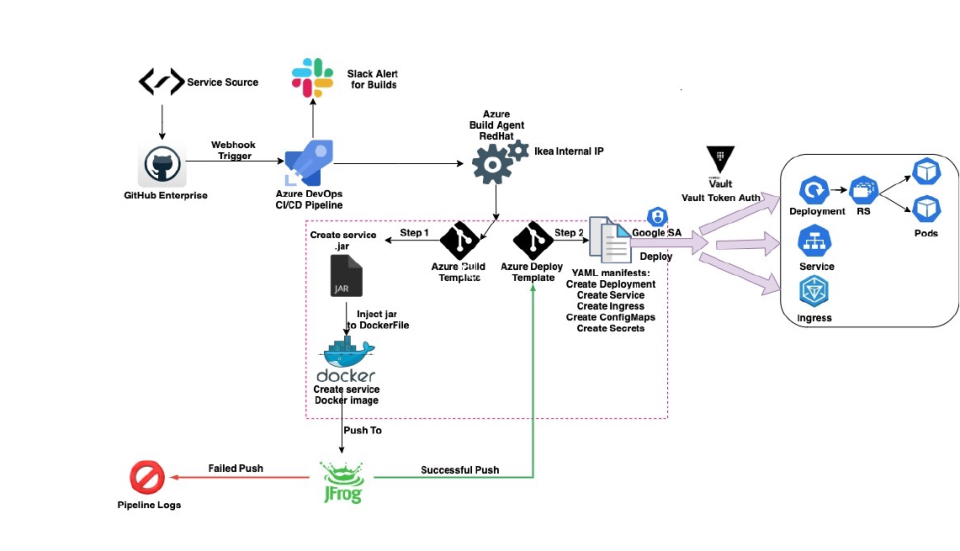
Monitoring KPIs for DevOps Success
Monitoring KPIs is crucial for achieving DevOps success.
They measure progress and effectiveness of your development pipeline beyond code speed to include quality assurance and system performance.
Common QA and System Performance KPIs
Common QA KPIs are:
- Bug trends for defect rates
- MTBF for reliability
- Customer satisfaction ratings
Popular system performance KPIs include:
- Response times for apps/API calls
- CPU utilization metrics
- Memory usage stats
Implementing a monitoring strategy?
Here are 5 tips:
1) Choose the right tools. Make sure the tools you choose can handle the scale and complexity of your system.
2) Identify critical areas needing real-time data collection. Focus on areas that have the most impact on your users and business.
3) Define KPIs that align with your business goals. Make sure your KPIs are specific, measurable, and relevant to your business objectives.
Collaborative Practices In A Distributed Work Environment: Challenges And Solutions
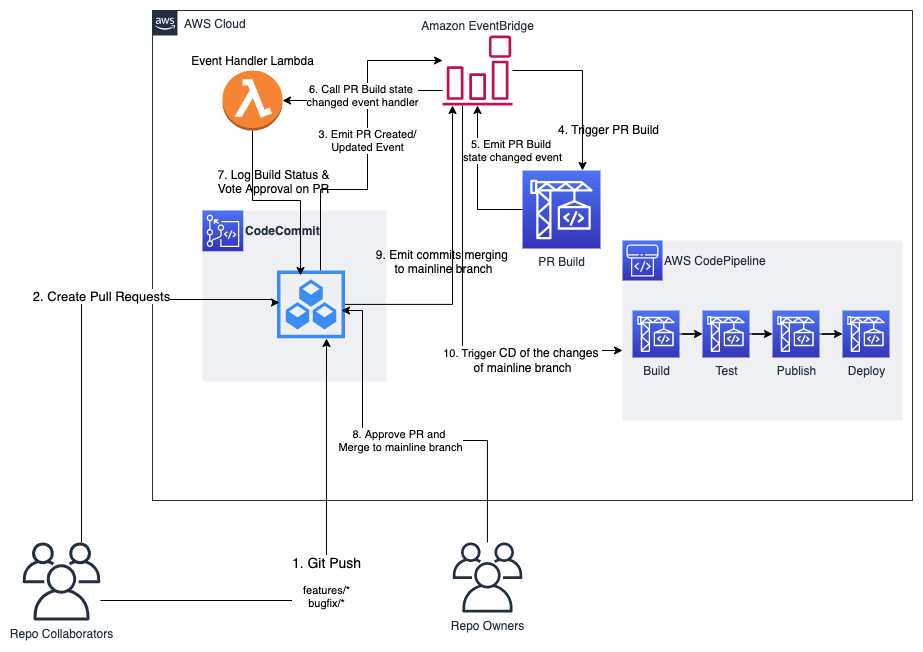
Collaborating in a Remote Work Environment
Remote work environments are becoming increasingly popular among companies, but they present new challenges for collaboration among teams in different locations.
Collaboration is crucial for project success, but it can be difficult when team members aren't co-located.
Challenges of Distributed Teamwork
One challenge of distributed teamwork is the lack of face-to-face interaction, leading to misunderstandings and communication gaps.
Collaborating on documents also becomes complicated without effective tools and processes.
Solutions like Zoom or Skype allow real-time interactions across multiple time zones.
Improving Collaborative Practices
To improve collaborative practices in a distributed environment:
- Schedule regular meetings to address related issues
- Use cloud-based platforms such as Google Drive or Dropbox for document sharing
- Establish clear guidelines outlining roles and responsibilities within the team
- Encourage open communication channels through instant messaging apps like Slack
- Foster trust by building personal relationships with colleagues through virtual coffee breaks or social events
Effective collaboration is essential for project success, and with the right tools and processes in place,remote teams can work together just as effectively as co-located teams.
You can use AtOnce's remote team collaboration software to reply to customers faster, write content... and avoid headaches:
By implementing these practices,remote teams can work together just as effectively as co-located teams.
Effective collaboration is essential for project success, and with the right tools and processes in place, remote teams can achieve their goals and deliver high-quality work.
Measuring The ROI Of Your DevOps Investments As Part Of Digital Transformation Strategy
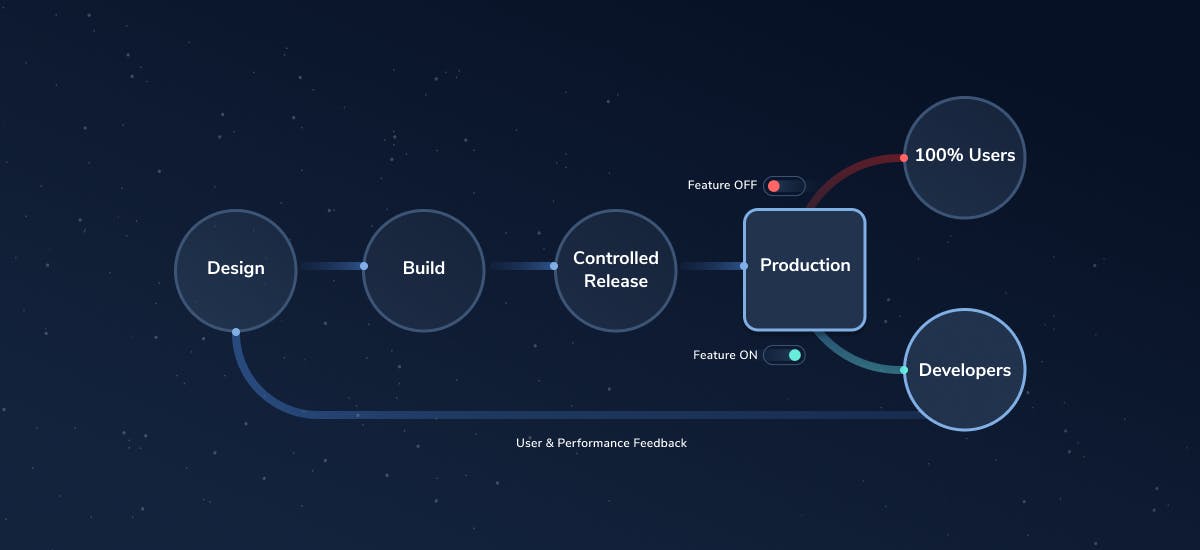
Measuring ROI for DevOps Investments
Measuring ROI for DevOps investments is crucial to ensure success in digital transformation.
DevOps practices aim to improve business outcomes by enhancing collaboration and automating processes, but without measurable data, it can be challenging to prove their value.
Effective ROI Measurement
To measure ROI effectively:
- Identify KPIs that align with your organization's goals
- Establish baseline measurements before implementing new tools or practices
- Regularly report progress towards KPI targets using a dashboard accessible by all stakeholders
Best Practice Tips
Here are some best practice tips for measuring ROI in relation to digital transformation strategies:
- Use unbiased and relevant metrics
- Clearly define the scope of each measurement
Remember, measuring ROI is essential to ensure that your DevOps investments are delivering the expected value and contributing to your organization's success.
By following these tips, you can effectively measure the ROI of your DevOps investments and make data-driven decisions to improve your digital transformation strategies.
Creating A Culture Of CI/CD Across Organizational Structures And Teams
The Importance of a Culture of Continuous Integration and Deployment
In today's digital world, a culture of continuous integration and deployment (CI/CD) is crucial for success.
This requires involving everyone in the process and communicating its importance clearly.
Creating an Effective CI/CD Culture
To create this culture effectively, organizations must first educate all members on the benefits of CI/CD. They should then foster collaborative environments where developers and operations personnel work together seamlessly.
Management should also promote an agile mindset that prioritizes feedback loops over individual achievements while providing time for learning new skills.
Five Key Points to Consider
- Hire or bring on experts who can train others
- Conduct regular technical workshops
- Implement automated testing processes
- Encourage experimentation with small changes rather than large ones at once
- Celebrate successes as they happen along the way
Continuous integration and deployment is not just a process, it's a culture.
It requires a mindset shift and a commitment to ongoing improvement.
By following these key points, organizations can create a culture of CI/CD that is sustainable and effective.
Remember, CI/CD is not just a process, it's a culture.
It requires a mindset shift and a commitment to ongoing improvement.
The benefits of a culture of CI/CD are clear: faster time to market, higher quality products, and happier teams.
The Future Of Software Development: Mapping Out Best Practices Beyond 8
The Future of Software Development
The future of software development is thrilling.
Moving beyond DevOps practices requires exploring new ways to deliver better results for customers.
To optimize each step, shift from delivering code to providing end-to-end value.
This creates resilient and scalable applications that adapt quickly.
Five Key Points for Best Practices
Consider these five key points when mapping out best practices:
- Collaborate between teams: Use tools like Slack or Trello to focus on collaboration.
- Automate wherever possible: Leverage automation with CI/CD pipelines and testing frameworks.
- Embrace agile methodologies: Adopt Agile methodologies such as Scrum or Kanban boards for project management.
- Use a data-driven approach: Use metrics-based decision-making through A/B testing and user feedback loops.
- Invest in continuous learning: Invest in employee training programs regularly.
By following these steps, you can create an efficient workflow that delivers high-quality products faster than ever before!
Collaboration, automation, agile methodologies, data-driven approach, and continuous learning are the key points to consider when mapping out best practices.
Use tools like Slack or Trello to focus on collaboration.
Leverage automation with CI/CD pipelines and testing frameworks.
Adopt Agile methodologies such as Scrum or Kanban boards for project management.
Use metrics-based decision-making through A/B testing and user feedback loops while investing in employee training programs regularly.
Collaboration, automation, agile methodologies, data-driven approach, and continuous learning are the key points to consider when mapping out best practices.
Final Takeaways
As a founder of a tech startup, I know firsthand the importance of DevOps best practices. It's what keeps our team running smoothly and our customers happy. At AtOnce, we use a combination of AI writing and AI customer service tools to streamline our DevOps process. Our AI writing tool helps us create clear and concise documentation for our code, making it easier for our team to understand and maintain. But it's not just about the tools we use. It's about the culture we've built around DevOps. We prioritize communication and collaboration between our development and operations teams, ensuring that everyone is on the same page and working towards the same goals. One of our key DevOps best practices is continuous integration and deployment. We use automated testing and deployment tools to ensure that our code is always up-to-date and working properly. This allows us to quickly identify and fix any issues that arise, minimizing downtime and keeping our customers happy. Another important best practice is monitoring and logging. We use AI-powered monitoring tools to keep an eye on our systems and identify any potential issues before they become major problems. And with our AI customer service tool, we're able to quickly respond to any customer inquiries or issues, ensuring that they always have a positive experience with our product. Overall, DevOps best practices are essential for any tech startup looking to succeed in today's fast-paced environment. And with the help of AtOnce's AI writing and customer service tools, we're able to stay ahead of the curve and deliver the best possible experience to our customers.- Are you struggling to find the right words?
- Is it taking too long to create copy that converts?
- Are you tired of constantly staring at a blank page?
- AtOnce produces high-quality, SEO-optimized content in minutes - not hours!
- With AI-powered tools, you can spend more time focusing on strategy and less time on the nitty-gritty of writing.
- AtOnce's intuitive interface makes writing easy, even for those who aren't natural wordsmiths.
What is DevOps?
DevOps is a set of practices that combines software development and IT operations to shorten the systems development life cycle while delivering features, fixes, and updates frequently in close alignment with business objectives.
What are the benefits of DevOps?
DevOps helps organizations to increase the speed of software delivery, improve reliability and security, and achieve better collaboration and communication among teams. It also enables continuous feedback and improvement, leading to better customer satisfaction and business outcomes.
What are some best practices for DevOps in 2023?
Some best practices for DevOps in 2023 include adopting a cloud-native approach, implementing infrastructure as code, using automation and AI/ML tools, prioritizing security and compliance, and fostering a culture of continuous learning and experimentation.
